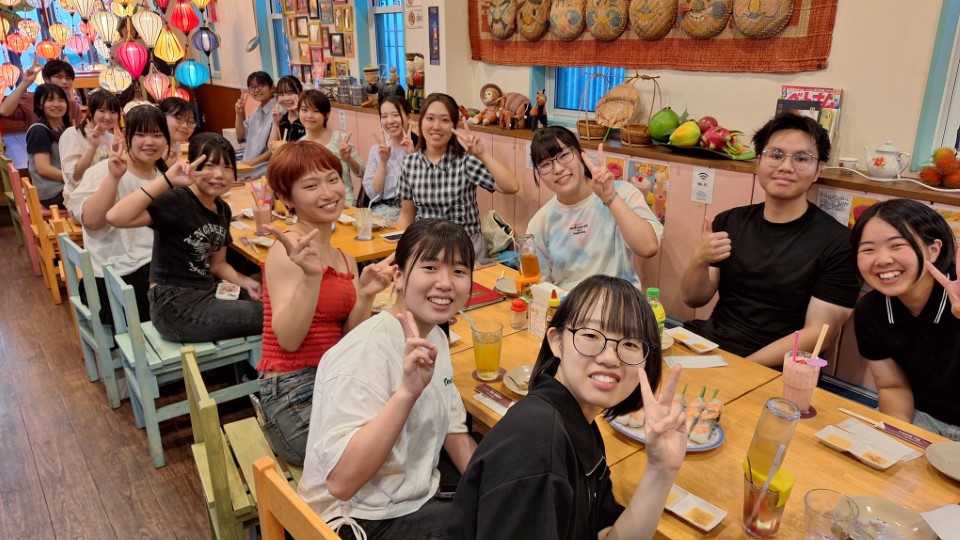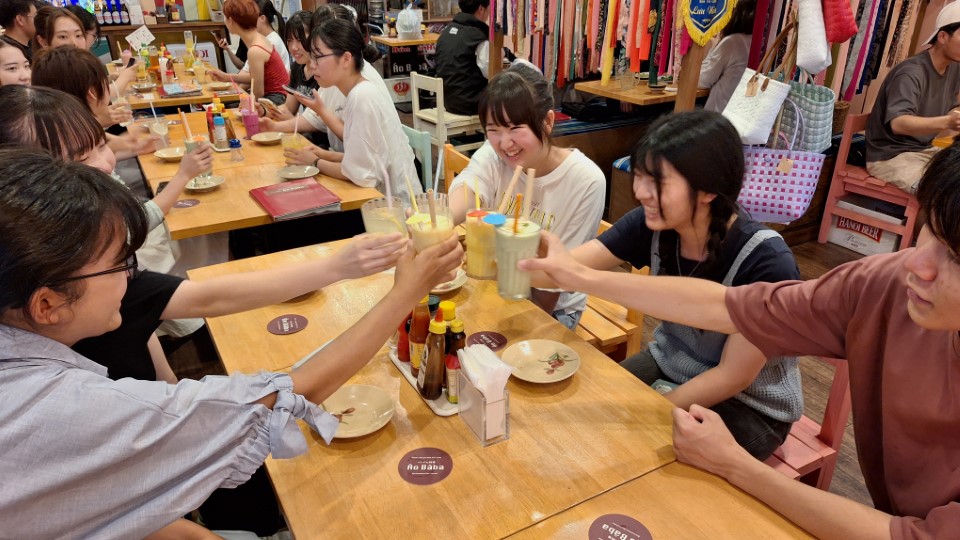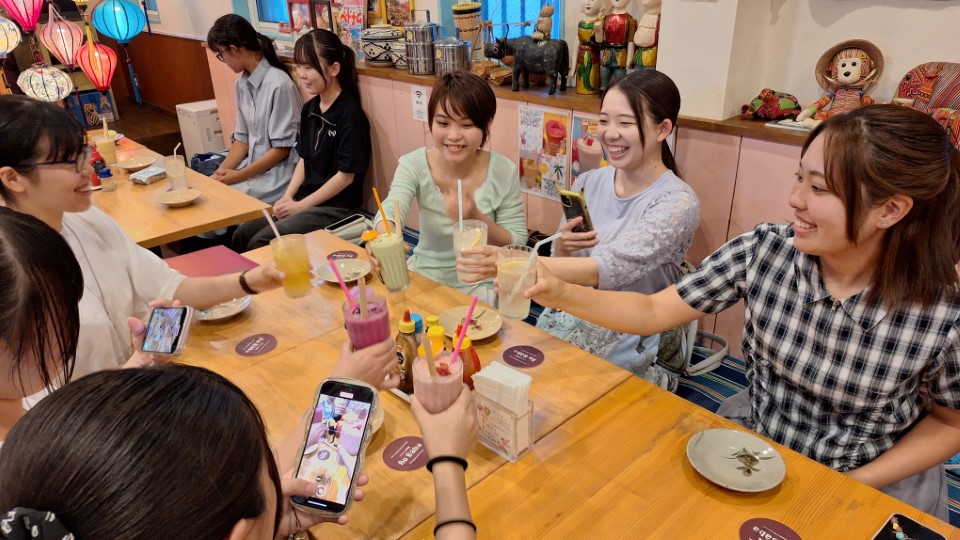
New information
Experiencing Vietnamese Culture with All Five Senses: Students of “International Collaborative Learning (Vietnam)” Visit Aobaba
On the evening of Sunday, July 20, seventeen students enrolled in the course “International Collaborative Learning (Vietnam)” visited the Vietnamese restaurant Aobaba in Mito City to experience Vietnamese food culture with all five senses.
This course is part of a COIL (Collaborative Online International Learning) project conducted in partnership with students from Hai Phong University in Vietnam. Through COIL, students from different countries connect online and engage in joint learning under the guidance of faculty from both institutions. This visit was part of the preparation for the Vietnamese Culture Exchange Event, to be held on Saturday, September 13 at Ibaraki University’s Mito Campus (event details here). The event will be organized by the students and aims to introduce the charm of Vietnamese culture to junior and senior high school students in Ibaraki Prefecture. To do so effectively, it is essential that the students first deepen their own understanding of Vietnamese culture.
On the day of the visit, Vietnamese students enrolled in the course also participated and introduced the characteristics and cultural background of the dishes. The meal featured a variety of iconic Vietnamese dishes such as fresh spring rolls (Gỏi cuốn), pho, coconut curry, and stir-fried water spinach. Through the flavors, aromas, and presentation of the food, the students were able to experience Vietnamese culture with all five senses. They also gained new insights into Vietnamese ingredients, seasonings, and dining customs.
What stood out to many students was the diversity and accessibility of the cuisine. They enjoyed comparing the textures and ingredients of the two types of spring rolls—fried and fresh, and found that dishes like pho and coconut ice cream were seasoned in a way that suited Japanese tastes, making them easy to enjoy even for first-timers. Some also noted that southern Vietnamese cuisine tends to be sweeter, which reminded them of regional flavor differences in Japan.
From a cultural perspective, students shared impressions such as: “The interior decorations made me feel like I was actually in Vietnam,” “The way private rooms were created using colorful fabrics and lanterns was beautiful and different from Japan,” and “The Vietnamese-style toast was more complex than I expected.” These comments reflect a growing interest in the differences in space and customs.
Students also noticed similarities and differences in food culture, such as: “In Vietnam, people share dishes from large plates, while in Japan, food is served individually,” “There were many fish-based dishes, and I was surprised that shishamo is called the same in both languages,” and “Many Japanese people seem to dislike cilantro.”
Many also appreciated the restaurant’s thoughtful adaptations, including: “The seasoning was kept light so we could adjust it with condiments,” “The Japanese-language menus and explanations were easy to understand,” and “The food was clearly designed to be approachable for Japanese customers.” Others noted that the decorations were so charming they made you want to take photos, and that the restaurant seemed popular with both Japanese and international guests, suggesting that Vietnamese cuisine is becoming more widely accepted in Japan.
Through this experience, the students gained valuable insights not only into Vietnamese cuisine, but also into the atmosphere, hospitality, and interpersonal warmth that characterize Vietnamese culture.


